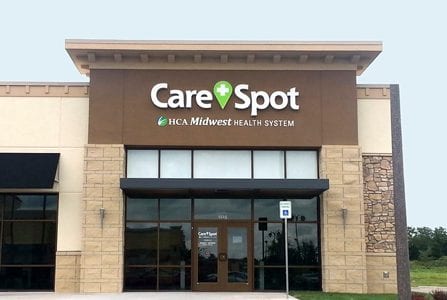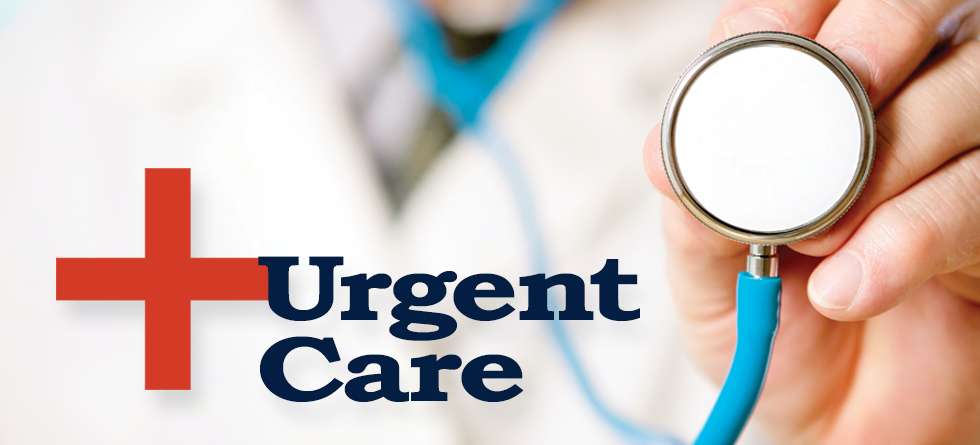The Importance of Urgent Treatment Centers in Linking the Space In Between Medical Care and Emergency Providers
Immediate care facilities have actually arised as a crucial element of the medical care landscape, effectively addressing the vital demand for prompt clinical attention without resorting to emergency services. The developing role of immediate treatment centers increases crucial concerns regarding their combination within the broader medical care system and the effects for person end results and resource allotment.
Summary of Urgent Care Centers
Immediate care facilities have actually ended up being a crucial part of the healthcare distribution system, offering available medical services for non-life-threatening conditions. These centers typically operate outside basic office hours, offering people an option to emergency rooms and health care settings. Clients seeking urgent treatment commonly present with concerns such as minor injuries, infections, or ailments that require punctual attention yet do not position an instant risk to life or arm or leg.
Immediate care facilities are staffed by a series of medical care experts, consisting of medical professionals, registered nurse professionals, and physician aides, that are furnished to diagnose and deal with various clinical problems. They commonly feature diagnostic devices such as X-ray equipments and research laboratory solutions, enabling them to supply thorough care on-site.
The establishment of immediate treatment facilities has been affected by the raising demand for timely medical solutions in a fast-paced society, where clients may struggle to protect visits with health care companies. Consequently, these facilities intend to alleviate blockage in emergency departments, improving total healthcare performance. Additionally, immediate care centers often function as a bridge between medical care and emergency services, making sure that patients get appropriate care tailored to their particular clinical requirements.

Benefits of Urgent Care Solutions
Accessing prompt medical treatment is a significant benefit of immediate treatment services. These centers supply instant focus for non-life-threatening conditions, successfully reducing wait times compared to standard emergency situation divisions. Individuals looking for treatment for minor injuries, ailments, or urgent health and wellness issues can obtain treatment without the long delays often associated with health center gos to.
Another key benefit is the extended hours of procedure. Numerous urgent care facilities are open evenings and weekend breaks, accommodating clients who might not have the ability to see their medical care service provider throughout standard office hours. This flexibility makes urgent care an easily accessible choice for those with busy routines or unexpected health and wellness issues.
Moreover, urgent care facilities usually use a large range of solutions, including diagnostic testing, X-rays, and basic laboratory solutions. This comprehensive method enables fast diagnosis and therapy, improving client fulfillment.
Furthermore, urgent treatment facilities are normally extra cost-effective than emergency situation spaces, making them an attractive choice for individuals without insurance or those with high-deductible strategies. In general, immediate treatment solutions play a critical function in supplying obtainable, timely, and cost effective clinical care.
Contrast With Primary Care
Commonly, individuals frequently consider their choices between immediate care centers and health care service providers when looking for medical attention. Both offer necessary roles in the health care system, yet they differ significantly in expense, access, and range.
Medical care carriers are generally the very first factor of contact for clients, concentrating on long-term health monitoring, preventative treatment, and persistent condition management. They offer connection of treatment, cultivating a patient-provider partnership that enables comprehensive health and wellness analyses and customized treatment strategies. Scheduling a consultation can be taxing, commonly needing days or weeks in development. Urgent Care.
On the other hand, urgent treatment facilities provide prompt take care of non-life-threatening conditions that require punctual attention, such as try this small injuries or infections. These centers often operate outside of traditional workplace hours, fitting individuals that may not be able to see their key treatment carrier throughout routine business times. In addition, immediate care is normally extra economical than emergency situation room gos to, making it an appealing alternative for those with minimal medical care accessibility.
Eventually, while immediate treatment centers and medical care suppliers both add to individual health, they accommodate distinct needs, making it important for clients to identify which alternative finest lines up with their conditions.
Emergency Solutions Interaction
The interaction between immediate treatment centers and emergency situation services is a vital aspect of the healthcare landscape, particularly when clients face circumstances that might intensify in seriousness. Immediate treatment facilities act as a bridge in between medical care and emergency situation departments, resolving non-life-threatening problems that need immediate interest. This cooperation improves individual outcomes and enhances source allotment within the healthcare system.
When individuals provide with immediate yet not life-threatening issues, immediate care centers can successfully manage their requirements, alleviating blockage in emergency clinic. Facilities outfitted with diagnostic capabilities can facilitate timely recommendations to emergency situation services when a client's condition surpasses the extent of urgent care treatment. This smooth interaction aids ensure that patients get the ideal degree of treatment without unneeded hold-ups.
Moreover, effective communication between urgent treatment providers and emergency services is vital. Sharing person details and therapy histories cultivates coordinated care, minimizing the page danger of redundant examinations and procedures. As healthcare remains to develop, the dynamic partnership between urgent care facilities and emergency situation services will certainly play a crucial function in enhancing patient care efficiency, fulfillment, and total health results within the neighborhood.
Future of Urgent Care Facilities
As healthcare needs advance, the future of immediate care facilities is positioned to become significantly essential to the total clinical community (Urgent Care). These facilities are likely to expand their duties by integrating innovative modern technologies, such as telemedicine, expert system, and digital health document combination. This will certainly improve person accessibility and improve treatment control in between immediate care, medical care, and emergency services
Moreover, urgent care facilities are expected to expand their service offerings to consist of precautionary care and persistent disease monitoring. This shift will place them as crucial components in managing population health, decreasing the worry on emergency situation divisions, and dealing with spaces in medical care schedule.
The growing pattern of value-based care will even more speed up the change of immediate treatment centers, motivating them to focus on patient outcomes and complete satisfaction. Facilities may also adopt collaborative method versions, functioning carefully with experts and health care providers to guarantee thorough client monitoring.
Verdict
Finally, urgent treatment centers offer a crucial function in the medical care system by supplying instant access to therapy for non-life-threatening conditions, properly minimizing pressure on emergency solutions. Their expanded hours and varied series of solutions improve person ease and satisfaction, while additionally guaranteeing ideal treatment distribution. As healthcare requires remain to advance, the role of immediate care facilities will likely end up being progressively substantial, additional linking the space in between primary treatment and emergency situation solutions.
The establishment of immediate treatment facilities has been influenced by the boosting need for timely medical solutions in a fast-paced culture, where people may have a hard time to secure consultations with key care carriers. In addition, urgent care centers typically offer as a bridge between main treatment and go to this site emergency solutions, making sure that patients receive suitable care tailored to their details clinical needs.
Several immediate care facilities are open nights and weekend breaks, accommodating individuals who might not be able to visit their primary treatment service provider during basic office hours (Urgent Care). As health care continues to advance, the dynamic relationship in between urgent treatment facilities and emergency services will certainly play a pivotal role in improving patient care efficiency, fulfillment, and total health results within the area
